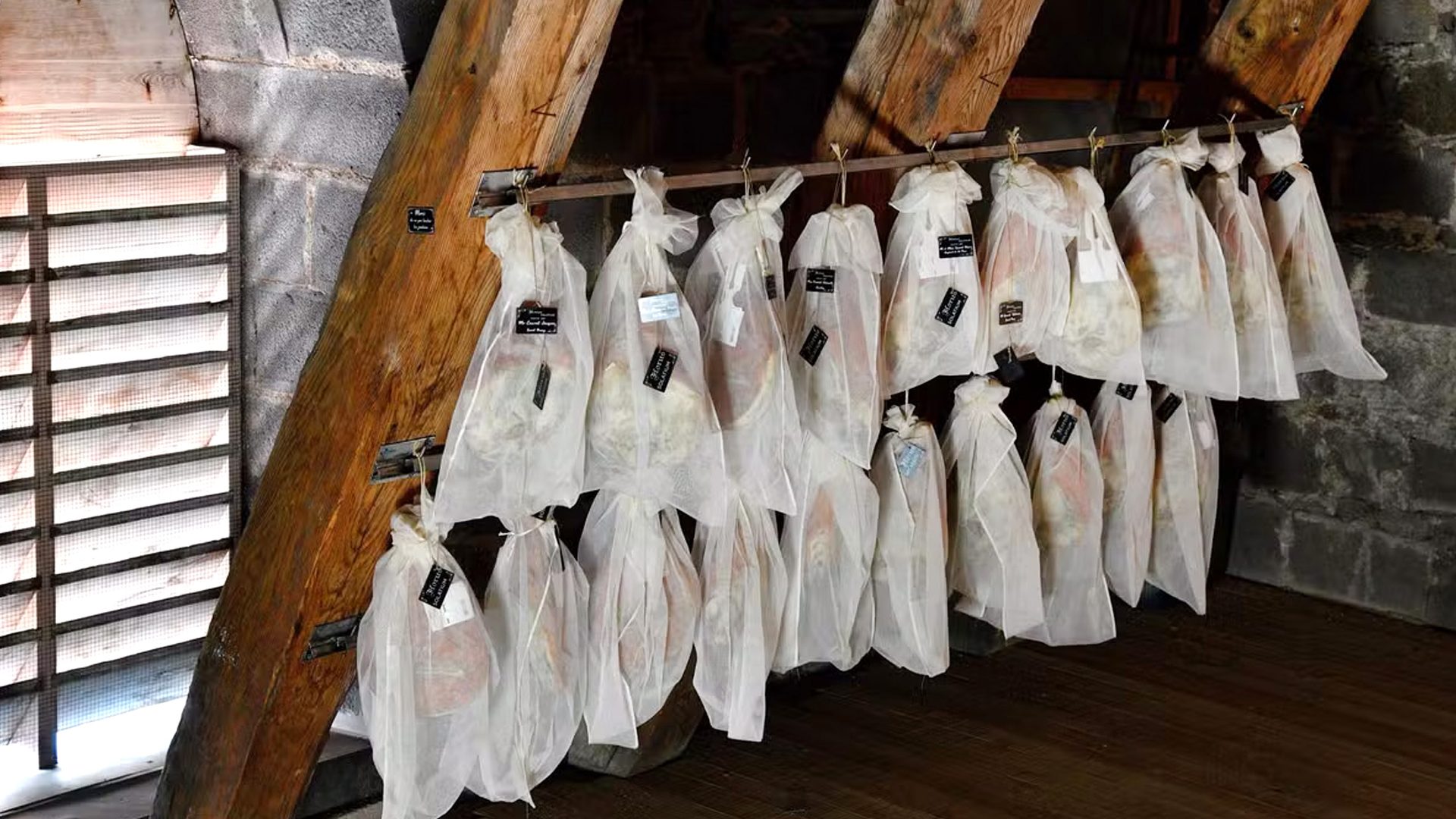In rural south-central France, an agricultural cooperative in the town of Saint-Flour is helping fund its cathedral by curing hams beneath the ceiling.
Since 2022, premium hams have been suspended for a year apiece within one of the Cathédrale Saint-Pierre’s two 135-metre-high towers, something that its rector, Philippe Boyer, described as “getting back to the fundamentals of the great abbeys that have always worked with the agricultural world”. It followed Boyer’s beehives, which he installed on the roof soon after assuming his role in 2011.
The charcuterie project began after money to restore the organ fell through. “I said to myself: ‘why not make a product in the spirit of the great medieval abbeys, who made their own food, which they sold to survive, to live?’” Boyer told the local press at the time. “In this case, it’s not for us to live, but to give new life to heritage.”
At their installation, the initial 50 hams were even blessed by Bishop Didier Noblot, top man in the diocese. The bishop asked for the hams to be granted the protection of St Antoine, patron saint of charcutiers.
Last year, the profits made from sales – about €150 per ham, retailed in the church cathedral shop – proved to be enough to fund repairs. It was something of a victory in a town of less than 7,000 people.
Churchgoing numbers in Saint-Flour, a hilltop town in the rural Auvergne region somewhere between Lyon and Bordeaux, have been declining in recent decades, much as they have across Europe. But the cathedral is an impressive Gothic building built in the early 1400s and is championed by all. The Association of Friends of the Cathedral said the hams are “used in the renovation of the works and buildings of the parish of Saint-Flour en Planèze”.
And the cathedral happens to be the perfect place to cure fine pork. It is one of the highest places of worship in Europe at almost 3,000ft above sea level. At a confluence of dry winds which bluster through the town’s surrounding plateaus, meat ages supremely, much as herring does by the coast in northern Scotland. The dark and hallowed space is also a safeguarding against damaging heat and light.
Today, it is a butcher named Patrice Boulard who ascends the bell tower’s 145 steps to hang hams, each in a swaddle. They age quietly among the Godly tolling.
As the congregation gives thanks, their song carries high into the clouds, up to the lord, but not before it strokes the fatty skin of pork. If you would like a Hemingway joke here, I filed this article with “For ham the bell tolls” as its title, in faint hope.
Boulard works for the farming cooperative Altitude, which manages the meat. Thirty farms in Auvergne provide hams, all of excellent quality and, in terms of supply, process and production, produced in a similar way to Comte in the Jura region. What’s more, the ham, Jambon d’Auvergne, has long been granted the same protected status as Champagne or Roquefort.
Naturally, as with any radical new idea involving the church, the hanging hams of Saint-Flour have proven to be controversial. Recently, a representative of the Architects of the Buildings of France – I am getting some National Trust vibes, are you? – called for their removal on safety grounds.
In the French newspaper Le Monde, a spokesperson from the organisation said the curing pork threatens the cathedral’s ancient structure, as “the grease released from the ham would deteriorate the edifice and pose safety problems in the event of fire”. The paper reported that French culture minister Rachida Dati must soon decide whether hams will still be allowed to hang and called the debacle a “bizarre story that questions the relationship between the church, the rural world and the government.”
Which it is. A fight is on, one in which locals are railing against Paris, against central governance as they so often do in France’s rural enclaves. I pray to God their hams are allowed to remain. You should not have to be in Nice to have your trotters up.




